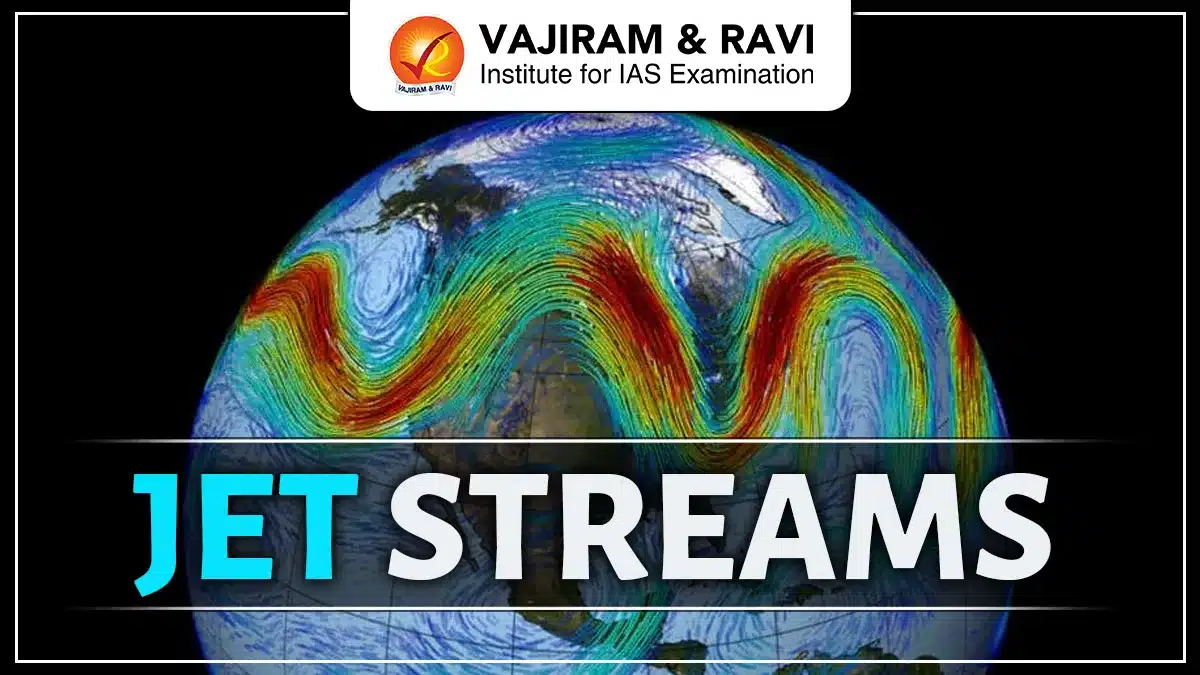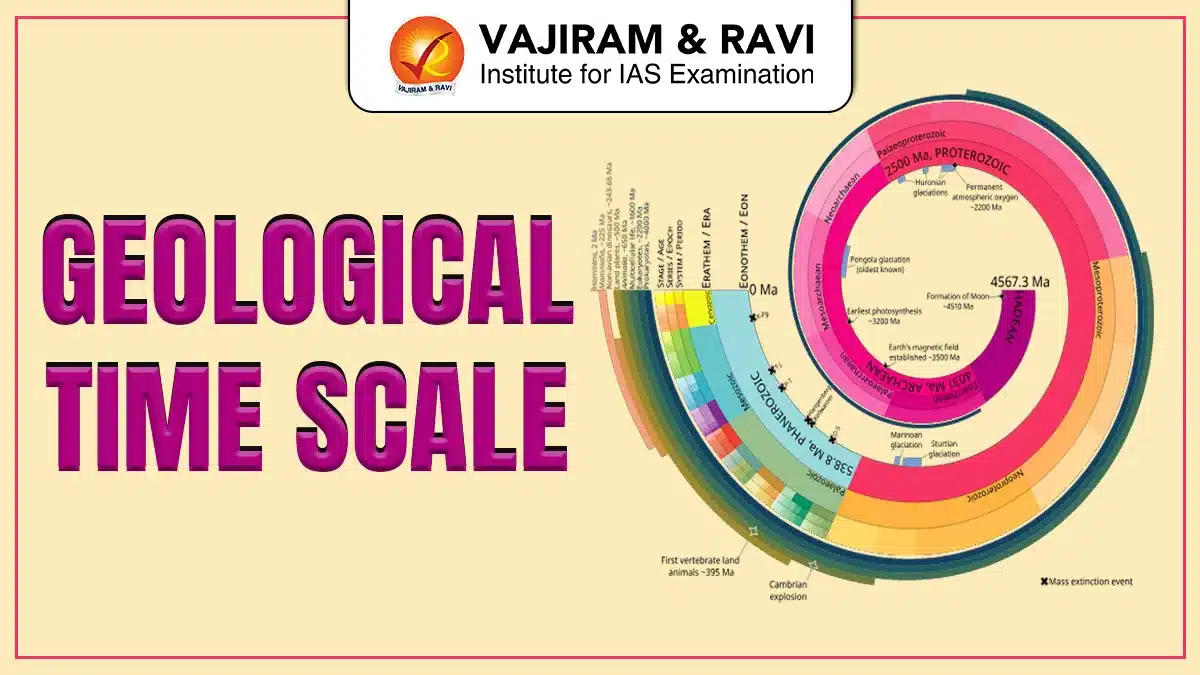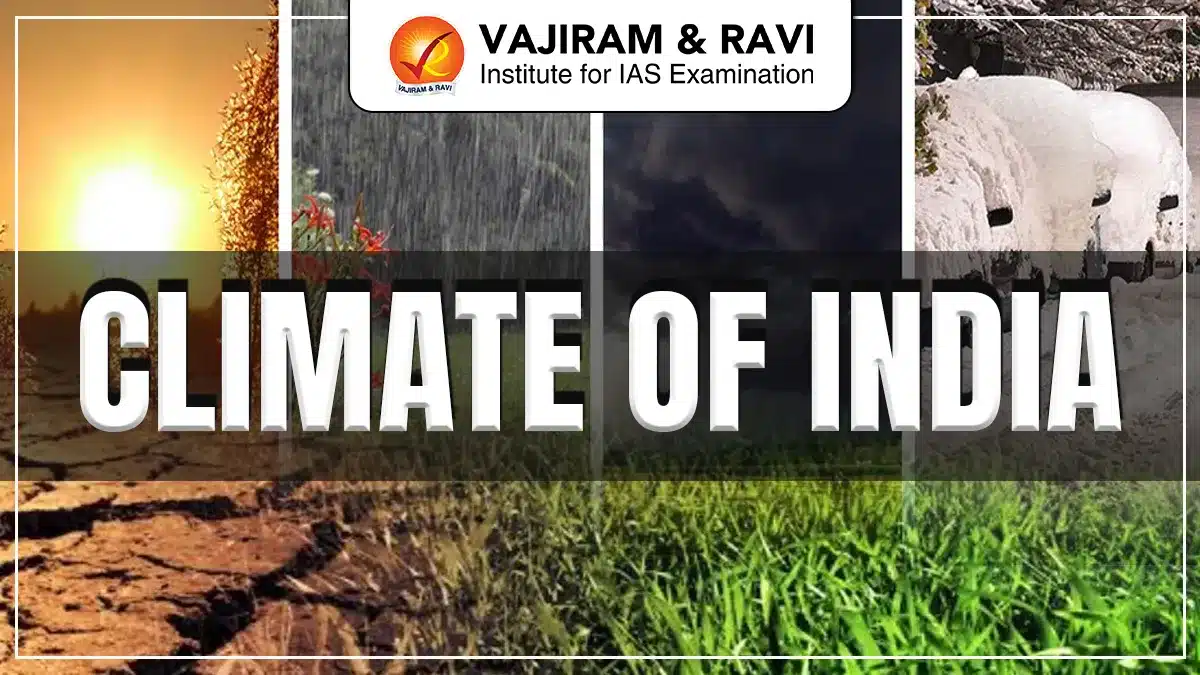Cloud Seeding is a technique of weather modification aimed at enhancing rainfall or snowfall by dispersing chemical agents into clouds. It is employed in drought-prone areas, for agriculture support or pollution mitigation when natural precipitation is insufficient. Research indicates that under suitable atmospheric conditions, it may boost precipitation by 5-20 %.
Cloud Seeding Delhi
Delhi’s recurring winter smog and acute episodes of hazardous air quality prompted authorities to explore rapid mitigation. In 2025, the Delhi Cabinet approved a technology demonstration- five cloud-seeding sorties with aircraft operated by IIT-Kanpur (operational partner), budgeted at ₹3.21 crore. The stated objective: induce artificial rain to wash down suspended particulates and provide temporary air-quality relief. The trials were planned during IMD-identified weather windows and required DGCA flight/ airspace clearance.
- Cloud Seeding Delhi 2025 Operational Details:
- Partners: Delhi Government, IIT-Kanpur, IMD coordination, DGCA approvals for aircraft.
- Mechanism: Aircraft-based release of silver-iodide based seeding flares into targeted cloud decks; ground monitoring of PM2.5/ PM10 and meteorological parameters.
- Timing: Approved for select windows during monsoon/ post-monsoon 2025 (specific windows announced by IMD).
- Cloud Seeding Delhi Efficiency:
- Artificial rain can cause rapid washout of particulates; modelling and earlier experiences suggest immediate PM reductions. However, effects are ephemeral if emission sources remain active. Reuters reported trials launched in late October 2025 with expectation of rainfall within minutes to hours after seeding; authorities cautioned continuation depends on cloud availability.
- Cloud Seeding Delhi 2025 Reasons for partial failure:
- Seasonality: Delhi’s worst pollution months (Nov-Jan) often have stable, clear skies and temperature inversion, few target clouds. IMD repeatedly emphasized narrow seeding windows.
- Source Control Gap: Seeding does not reduce emissions; crop stubble burning, vehicular and industrial emissions continue to replenish PM.
- Scientific Uncertainty: GAO and atmospheric scientists caution the evidence base for urban pollution control via seeding is limited.
Cloud Seeding Meaning
Cloud seeding involves injecting substances like silver iodide, potassium iodide, dry ice or salt particles into clouds to serve as cloud condensation or ice‐nucleating nuclei. These particles accelerate droplet or ice crystal formation, increasing the likelihood of precipitation when adequate moisture and cloud structure exist.
Cloud Seeding How It Works?
Cloud seeding works by introducing specific chemical agents into clouds to enhance precipitation through microphysical changes. These agents, known as cloud condensation nuclei (CCN) or ice nuclei (IN), trigger the formation or enlargement of water droplets or ice crystals. The process can be carried out using aircraft, drones, rockets, or ground generators, depending on weather conditions. Effective cloud seeding requires suitable cloud moisture, temperature, and atmospheric dynamics for success.
Cloud Seeding Process
Cloud seeding is typically executed through the following steps:
- Cloud Identification
- Meteorological agencies (e.g., India Meteorological Department, IMD) identify suitable clouds having sufficient liquid/ice water content and vertical development.
- Assessment of moisture availability, wind conditions, and cloud type ensures the operation is feasible.
- Selection of Seeding Agent (Cloud Seeding Chemical)
- Agents such as silver iodide, potassium iodide, dry ice (solid CO₂) or salt particles are chosen- silver iodide mimics ice nuclei in supercooled clouds.
- Warm-cloud seeding uses hygroscopic salts (e.g., NaCl) to boost droplet growth by collision/ coalescence.
- Dispersion Mechanism
- Agents are released via aircraft, rockets, ground-based generators or drones.
- E.g., in Delhi’s 2025 pilot five aircraft sorties covering ~100 sq km each.
- Microphysical Interaction and Precipitation
- The introduced particles act as nuclei; water vapour condenses or freezes around them; droplets/ice crystals grow until they fall as precipitation.
- Evaluation and Monitoring
- Pre- and post-seeding rainfall is measured. Studies found 20-24 % increase in rainfall in favourable conditions in India.
- Pollutant reduction monitoring in urban seeding operations (e.g., Delhi) uses PM2.5/ PM10 sensors.
Cloud Seeding Chemicals
Cloud Seeding Chemicals are the primary agents used to stimulate precipitation by altering microphysical processes within clouds under specific conditions. These substances act as condensation or ice nuclei depending on cloud type and ambient temperature. Key Seeding Agents Used in this process are:
- Silver Iodide (AgI): Most commonly used chemical due to its crystalline structure resembling ice; ideal for cold clouds.
- Sodium Chloride (NaCl): Used for warm clouds in coastal or tropical regions; encourages droplet formation through hygroscopic growth.
- Potassium Iodide (KI): Acts similarly to silver iodide but less toxic; preferred in environmentally sensitive areas.
- Dry Ice (Solid CO₂): Used in aircraft-based seeding; rapidly cools cloud moisture, forming ice crystals.
- Liquid Propane: Expands into ice nuclei when sprayed in supercooled clouds; used for targeted, short-duration precipitation.
- Calcium Chloride (CaCl₂): Promotes droplet coalescence in warm cloud systems; tested in India’s arid regions like Rajasthan.
Cloud Seeding Types
There are multiple cloud seeding types; here are five commonly discussed:
- Warm-Cloud Hygroscopic Seeding
-
- Method: Disperse hygroscopic salts (e.g., NaCl) into warm clouds (above 0 °C) to enhance droplet growth via collision-coalescence.
- Agent: Sodium chloride or other salts.
- Cloud Selection: Warm cumulus clouds with liquid water content > 0.5 g/m³ and vertical thickness > 1 km. Indian experiments in Pune region showed ~24 % increase.
- Cold-Cloud Glaciogenic Seeding
-
- Method: Release ice-nucleating agents (like silver iodide) into supercooled clouds (<0 °C) so ice crystals form, grow and fall as snow/rain.
- Agent: Silver iodide (AgI) or potassium iodide.
- Cloud Selection: Supercooled stratiform/convective clouds; used in mountainous/drought areas.
- Hygroscopic Rocket/ Drone Seeding
-
- Method: Use rockets or drones to inject agents into target clouds, particularly when aircraft access is limited.
- Agent: Aerosols or salts dispersed via drone flares.
- Cloud Selection: Clouds identified by radar/ML systems (e.g., CloudSense model).
- Ground-based Generator Seeding
-
- Method: Generators at ground emit silver iodide smoke or hygroscopic particles into clouds overhead.
- Agent: Silver iodide smoke (often from flares) or salts.
- Cloud Selection: Often used in large catchment areas during monsoon; India’s RCPR programme (1957-66) used ground seeding.
- Suppression or Fog/ Frost Mitigation Seeding
-
- Method: Release agents to disperse fog or inhibit precipitation in controlled zones; used for flights/ urban air quality.
- Agent: Hygroscopic aerosols, even use of lasers/ electric charge.
- Cloud Selection: Shallow fog or low stratus clouds; still experimental.
Negative Effects of Cloud Seeding
Cloud seeding, while beneficial for rainfall enhancement, carries environmental and health-related risks that must be carefully managed through scientific regulation. Major Side Effects of Cloud Seeding:
- Environmental Pollution: Excessive silver iodide use may contaminate soil and water, impacting aquatic ecosystems and agriculture.
- Health Concerns: Trace silver accumulation may cause skin and organ-related conditions; WHO sets exposure limits to mitigate risks.
- Weather Imbalance: Artificial rain in one area may reduce precipitation elsewhere, potentially altering regional climatic equilibrium.
- Infrastructure Damage: Sudden heavy rainfall can trigger floods, landslides, and erosion in fragile terrains.
- Atmospheric Chemistry Impact: Chemical agents influence ozone and aerosol concentration, affecting long-term atmospheric quality.
- Cross-Border Disputes: Altered rainfall patterns can create tensions between neighboring states or countries over shared airspace or river basins.
Cloud Seeding Impact
Cloud seeding’s effects must be viewed across multiple, interconnected dimensions: hydrological, agricultural, environmental, public-health, economic, legal-policy and scientific. Major impact of Cloud Seeding are:
- Hydrological and Water-resource Impact: Cloud seeding aims to increase rainfall/snowfall in targeted catchments to boost surface inflows and groundwater recharge. Controlled experiments (including India’s CAIPEEX program) have shown measurable increases under favourable conditions, for example, some Indian warm-cloud studies reported precipitation increases up to ~20-24% in targeted cloud systems. However, results vary by region, cloud type and methodology; increases are conditional (i.e., require pre-existing moisture and cloud vertical development).
- Agricultural Impact: When successful, extra precipitation during critical crop stages improves soil moisture, reduces drought stress and can raise yields or salvage crops during deficit years. Pilot projects in India’s rain-shadow and reservoir catchments reported localized agricultural benefits where seeding coincided with crop water stress periods but robust, long-term yield studies are limited; benefits often remain anecdotal without multi-year controls.
- Environmental & Ecological Impact: Short-term benefits include drought relief and improved river flows. But there are concerns: repeated seeding might alter local microclimates, influence cloud lifecycles, or concentrate seeding agents (e.g., silver iodide) in soils and water bodies. Existing studies (and CAIPEEX guidelines) call for environmental monitoring; long-term ecotoxicology data remain sparse.
- Air-Quality and Public-Health Impact: Artificial rain can temporarily lower particulate pollution (PM2.5/ PM10) by washout. Delhi pilots aimed at pollution mitigation expect rapid PM reductions after rainfall, but reductions are short-lived and do not address emission sources (vehicles, industry, crop fires). Reliance on seeding as a pollution control strategy is therefore limited and must be integrated with emission reduction.
- Economic Impact and Cost-Benefit: Costs include aircraft/drone sorties, seed agents, sensors and personnel, for instance, Delhi’s approved five-trial package was ~₹3.21 crore. Economic returns depend on event success: a well-timed seeding that restores reservoir inflows or saves crops can justify costs, but failed trials have sunk budgets with negligible impact. Hence cost–benefit is context sensitive and requires careful economic appraisal.
- Scientific and Operational Impact: Cloud seeding drives meteorological research- improved radar, cloud models, aerosol-cloud interaction studies (e.g., CAIPEEX), and now ML-based cloud-selection tools. Operational programmes have accelerated development of localized seeding protocols and monitoring frameworks, improving scientific capacity even where precipitation gains are moderate.
- Legal, Ethical and Transboundary Impact: Seeding raises ethical and legal questions: who owns the rain, and could inducing precipitation over one region reduce rainfall downwind? Transboundary governance remains underdeveloped. India’s guidelines (IITM/ MoES) stress coordination and environmental assessment, but regional agreements and legal frameworks for cross-border effects are still nascent.
Cloud Seeding Challenges
Below are the major challenges associated with the process and impact of the Cloud Seeding:
- Meteorological Uncertainty: Cloud seeding requires specific cloud microphysics (sufficient liquid/ice content, vertical development). Many attempted seeding operations occur with inadequate cloud resources.
-
- Way Forward: Invest in high-resolution radar, lidar and satellite monitoring to ensure seeding occurs only with pre-verified favourable clouds; create strict go/no-go meteorological criteria.
- Inconclusive Efficacy Data: Large, well-controlled randomised studies are rare; attribution of rainfall increases to seeding is difficult.
-
- Way Forward: Implement standardized experimental designs (control regions, randomized trials, pre-seeding baselines) and publish open data for independent verification.
- Environmental and Toxicological Concerns: Long-term accumulation of agents like silver iodide is not fully assessed.
-
- Way Forward: Mandatory environmental impact assessments (EIAs) before scale-up; long-term soil/water monitoring and research on lower-risk or biodegradable seeding agents.
- Cost and Resource Prioritisation: High operational costs may divert funds from structural water projects.
-
- Way Forward: Require formal cost–benefit analysis tied to water security plans; use seeding as a complementary tool in well-justified, high-impact catchments.
- Regulatory and Institutional Gaps: Fragmented approvals (aviation, environment, meteorology) slow or complicate operations.
-
- Way Forward: Establish a single-window national cloud-seeding protocol (MoES lead) with clear DGCA, state and environmental clearances and standard operating procedures.
- Transboundary and Ethical Issues: Potential for downstream rain loss or perceived “stealing” of precipitation.
-
- Way Forward: Develop regional agreements and consultative mechanisms for shared basins; require downstream impact assessments before approval.
- Public Perception and Social Licence: Communities may distrust chemical seeding agents or fear unintended impacts.
-
- Way Forward: Mandatory public consultations, transparent reporting of agents used and monitoring results, and community engagement programmes.
- Limited Human Capacity and R&D: Operational skillsets (targeting, in-flight seeding, drone operations) are limited.
-
- Way Forward: Invest in capacity building at IITs, IMD and state agencies; set up certified cloud-seeding operator courses and simulation facilities.
- Monitoring and Attribution: Lack of standard post-seeding evaluation metrics undermines credibility.
-
- Way Forward: Mandate pre-defined indicators (mm rainfall, PM reduction, reservoir inflow), deploy automated sensor networks and publish independent audits.
- Over-reliance on Technology instead of Source Control: Using seeding to “fix” pollution or water scarcity can distract from emission control and conservation.
-
- Way Forward: Make seeding explicitly subordinate to emissions reduction and integrated water resource management in policy documents; fund source control concurrently.
Cloud Seeding Applications
The major applications of Cloud Seeding has been listed below:
- Agriculture and Drought Relief: Boost rainfall in arid zones, extend growing seasons and support crop yield. Indian studies show up to 20 % increase in rainfall in Karnataka’s Linganamakki area.
- Water Reservoir Top-up: Boost snowfall or rain in catchment areas to ensure reservoir inflows.
- Hail Suppression: Seeding before hail storms to reduce damage to crops.
- Air Pollution Mitigation: Inducing rain to remove PM2.5 and PM10 from urban air, e.g., Delhi’s seeding pilot for pollution control.
- Fog and Aviation Safety: Modify low clouds to reduce fog and improve visibility at airports in Himalayan regions.
- Climate Adaptation: Emerging use in climate resilience though effect remains uncertain.
Cloud Seeding in India
In India, cloud seeding has been trialled since the 1970s, e.g., experiments by the Indian Institute of Tropical Meteorology (IITM) showed up to 24% rain increase in certain warm-cloud seeding studies in Maharashtra. More recently, states like Delhi (~₹3.21 crore pilot) and Rajasthan (drone-based seeding) have explored artificial rain for pollution control and agricultural yield enhancement. Below is a consolidated, more detailed chronology of India’s major cloud-seeding projects and experiments, with aims and reported outcomes.
- RCPR and Early Experiments (1957-1966)
-
- Conducted by: Early government experiments (various states).
- Purpose: Proof-of-concept for monsoon augmentation.
- Methods/ Agents: Aircraft and ground flares (AgI); mixed results documented.
- Mumbai / Western Ghats Trials (1973-79)
-
- Conducted by: IITM / Mumbai area trials.
- Purpose: Test monsoon enhancement over urban/ western ghats.
- Outcome: Data added to operational knowledge; effects variable.
- Karnataka / Linganamakki Catchment (Warm-cloud trials, 1990s-2000s)
-
- Conducted by: Regional experiments with IITM involvement.
- Purpose: Increase reservoir inflow for hydropower/agriculture.
- Reported Impact: Studies cited localized increases (~20%) under favourable conditions.
- CAIPEEX (2018-2019 and follow-ons)
-
- Conducted by: Indian Institute of Tropical Meteorology (IITM), MoES.
- Purpose: Scientific evaluation of hygroscopic seeding in convective clouds; derive guidelines for rain-shadow regions.
- Methods: Specially hired research aircraft, microphysical instrumentation and modelling.
- Impact: Improved protocols and region-specific guidance; CAIPEEX produced evidence that hygroscopic seeding can be effective in warm convective systems when properly targeted.
- State Pilot Programs (2024-2025)
-
- Delhi (2025): Short pilot focused on pollution mitigation via five seeding trials (IIT-Kanpur/ Delhi Govt). Budget ~₹3.21 crore; trials conditional on IMD-verified windows and DGCA clearance. Early media reporting and government releases document attempts; expert commentary cautions limited winter cloud availability and limited long-term pollution benefit.
- Rajasthan Drone Project (Aug 2025): First large-scale drone swarm demonstration near Ramgarh Dam, ~60 drones in coordinated operation; objective to revive reservoirs and test drone deployment at scale. Early news coverage highlights operational novelty and aims for drought relief.
- Other Smaller Projects and Local Trials
-
- Several state agriculture departments and water bodies have run limited trials with mixed reporting; many focused on short-term reservoir top-up or hail suppression. Data quality and peer-review documentation vary.
Cloud Seeding Global Aspects
Several countries have sustained cloud-seeding programmes with different objectives and levels of evidence. Below are internationally referenced best-practice examples and lessons:
- China- Large-scale Operational Programme (Nationwide)
-
- Practice: Massive aircraft and ground generator operations to increase rainfall for agriculture, water security and major events (e.g., Olympics). China invests heavily in seeding as a complement to reservoir management. Reports indicate both large-scale deployment and opaque data release; Chinese programmes demonstrate the scale possible but highlight transparency concerns.
- United States- State-level Programs (Colorado, Wyoming, California)
-
- Practice: State water managers run long-term alpine/snowpack seeding (silver iodide) to augment snowmelt for reservoirs; operations follow defined seasons and monitoring. The U.S. GAO (2024) concluded data are inconsistent and recommended standardized monitoring, a model for rigorous evaluation.
- Thailand- Royal Rainmaking Project
-
- Practice: Since 1955, the Royal Rainmaking Project conducts aircraft seeding across agricultural zones; operational experience and institutional continuity are strengths. Thailand’s program is often cited for sustained operational design and integration with agricultural calendars.
- Australia- Targeted Drought Relief Trials
-
- Practice: Smaller, scientifically monitored trials targeting water catchments; emphasis on peer-reviewed evaluation and limited scale-up unless proven reproducible. Good example for staged R&D-to-operation transition.
- UAE/ Oman- Cloud Seeding for Water Security
-
- Practice: Gulf states use cloud seeding to increase rainfall over arid zones; operate under data-sharing pacts and deploy advanced monitoring to validate outcomes. Demonstrates application in water-scarce, high-value contexts.
Cloud Seeding UPSC
In late October 2025, the New Delhi government launched its first Cloud Seeding trials to combat winter smog, deploying aircraft from Indian Institute of Technology Kanpur to disperse silver-iodide flares over north-west Delhi. Authorities expect rainfall within “15 minutes to four hours” of seeding, aiming to cut PM2.5 levels by up to 50%. However, meteorologists warned that the programme’s success hinges on suitable cloud conditions, a challenge in Delhi’s winter climate.
Last updated on January, 2026
→ Check out the latest UPSC Syllabus 2026 here.
→ Join Vajiram & Ravi’s Interview Guidance Programme for expert help to crack your final UPSC stage.
→ UPSC Mains Result 2025 is now out.
→ UPSC Notification 2026 is scheduled to be released on January 14, 2026.
→ UPSC Calendar 2026 is released on 15th May, 2025.
→ UPSC Prelims 2026 will be conducted on 24th May, 2026 & UPSC Mains 2026 will be conducted on 21st August 2026.
→ The UPSC Selection Process is of 3 stages-Prelims, Mains and Interview.
→ Prepare effectively with Vajiram & Ravi’s UPSC Prelims Test Series 2026 featuring full-length mock tests, detailed solutions, and performance analysis.
→ Enroll in Vajiram & Ravi’s UPSC Mains Test Series 2026 for structured answer writing practice, expert evaluation, and exam-oriented feedback.
→ Join Vajiram & Ravi’s Best UPSC Mentorship Program for personalized guidance, strategy planning, and one-to-one support from experienced mentors.
→ UPSC Result 2024 is released with latest UPSC Marksheet 2024. Check Now!
→ UPSC Toppers List 2024 is released now. Shakti Dubey is UPSC AIR 1 2024 Topper.
→ Also check Best UPSC Coaching in India
Cloud Seeding FAQs
Q1. What is Cloud Seeding? +
Q2. Which agents are used as Cloud Seeding Chemical? +
Q3. Is Cloud Seeding effective in India? +
Q4. What are the environmental impacts of Cloud Seeding? +
Q5. Which countries use Cloud Seeding programs? +

















